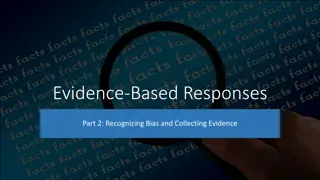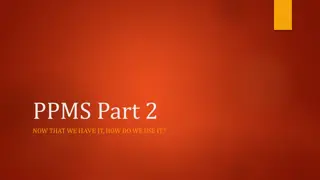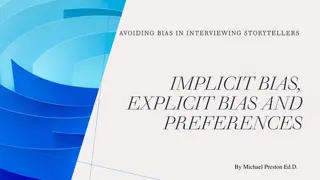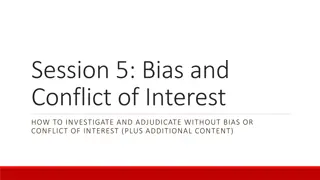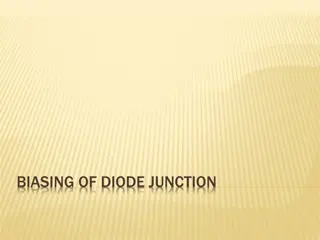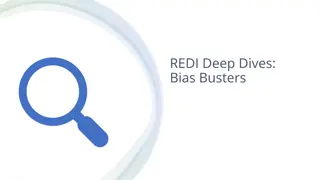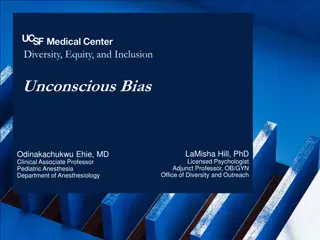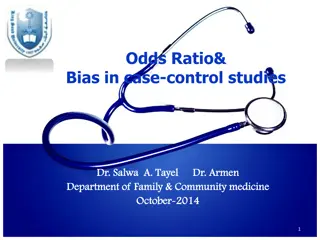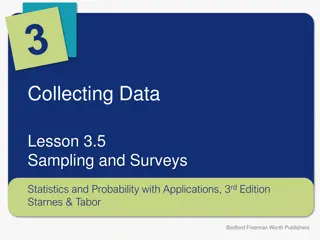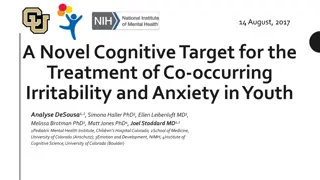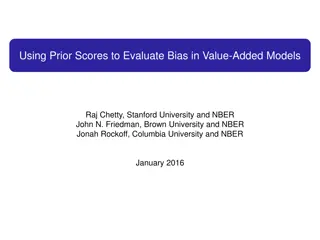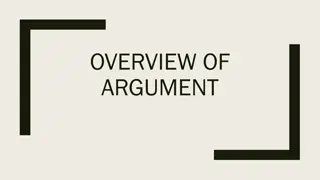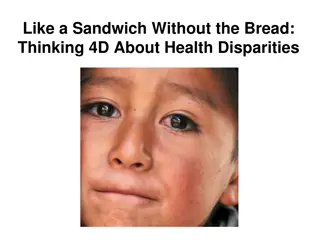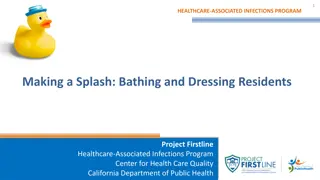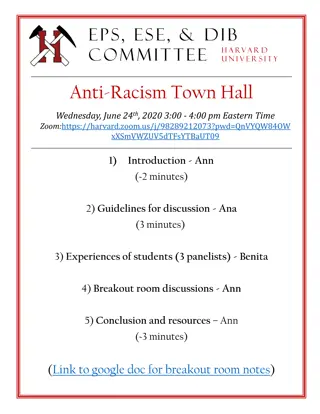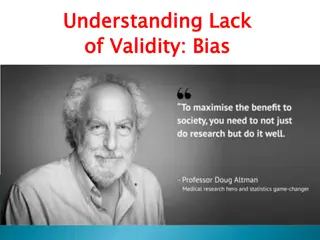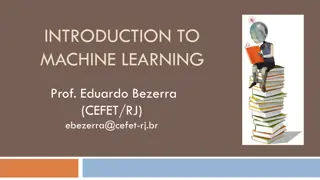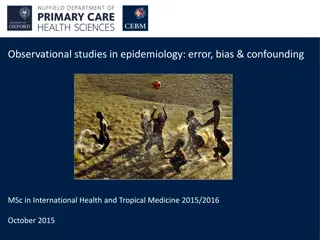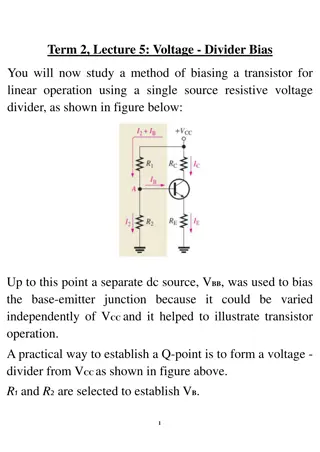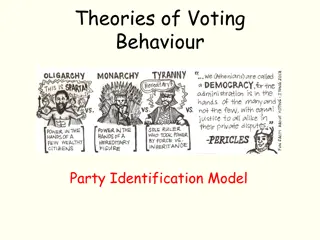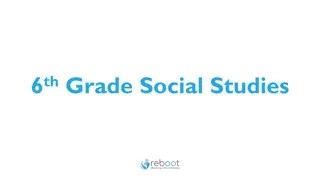Understanding Implicit Bias in Medical Education
Delve into the origins, forms, and manifestations of bias in clinical and medical education settings. Learn strategies to mitigate and address bias through a detailed exploration of terms like System 1 and System 2 thinking, implicit bias, race/racism, sexism, microaggressions, and more. Gain insight into identifying personal bias and understanding its impact on the learning environment based on surveys conducted by the AAMC.
Download Presentation

Please find below an Image/Link to download the presentation.
The content on the website is provided AS IS for your information and personal use only. It may not be sold, licensed, or shared on other websites without obtaining consent from the author. Download presentation by click this link. If you encounter any issues during the download, it is possible that the publisher has removed the file from their server.
E N D
Presentation Transcript
Implicit Bias in Medical Education Amanda Kost and Joshua Jauregui With thanks to Dr. Roberto Montenegro
Objectives Describe the origins of bias. Compare and contrast forms of bias. Identify manifestations of bias in clinical and medical education environments. Practice strategies to mitigate and address bias in clinical and medical education environments.
Getting on the same page Defining terms
Defining Terms System 1 and System 2 Thinking System 1 Fast/Automatic/Low Effort System 2 Slow/Deliberate/High Effort Implicit Bias Unconscious Attitudes or stereotypes that influence our understanding, actions, and decisions Might be counter to stated beliefs or values Explicit Conscious
Defining Terms Race/Racism Race is a sociopolitical classification, used to justify social inequity as natural , NO genetic basis Racism is very real, and is system of power. Inequitable distribution of opportunity and resources based on the social interpretation of how one looks ( race ) Sexism Sexism is very real and is system of power. Inequitable distribution of opportunity and resources based on the social interpretation of how one looks (gender/sex)
Defining Terms 3 levels of racism Institutional Interpersonal/Personally mediated Internalized
Defining Terms Microaggressions Common A form of interpersonal/personally mediated racism/sexism/etc Harmful
Where does bias come from? 1:2:4 All In
How to identify personal bias Implicit Association Tests Flip it to test it
What do our students tell us? How bias impacts the learning environment: Results from surveys administered by the AAMC
Mistreatment Type (% Occasionally/Frequently) 40% UWSOM National UW =75th percentile UW =77th percentile 30% UW =87th percentile 20% UW =92th percentile 10% 0% 2016-18 2019 2016-18 2019 2016-18 2019 2016-18 2019 Offensive sexist remarks Public Humiliation Lower evaluations or grades/gender Lower evaluations or grades/race & ethnicity
Mistreatment Source 40% UWSOM National 30% 20% 10% 0% 2016-18 2019 2016-18 2019 2016-18 2019 2016-18 2019 Clerkship faculty (clinical setting) Resident/intern Nurses Students
2018 Y2Q (E16) vs. 2019 GQ (E15) (% denotes students experiencing mistreatment at least once during training) Mistreatment Behavior Y2Q (E16) 34 11 1 3 5 GQ (E15) 50 23 1 5 11 Public Embarrassment Public Humiliation Physical Threat Unwanted Sexual Advances Denied Opportunities for Training or Rewards Based on Gender Offensive Sexist Remarks/Names Lower Evaluations or Grades Solely Because of Gender Denied Opportunities for Training or Rewards Based on Race or Ethnicity Racially or Ethnically Offensive Remarks/Names Lower Evaluations or Grades Solely Because of Race and Ethnicity 16 4 25 13 4 4 14 1 12 8
Evaluator of Educator Above the line Below the line confidential Respect scores (1-5, respect to student, respect to others) I experienced this person doing XYZ I witnessed this person doing XYZ to another student Confidential comments Daily review by Melinda Weekly review by IROC 3 and below OR comment mandatory review Red/Yellow/Green Red: every few years (assault, smelled alcohol on their breath, etc) remove student immediately Yellow: less than 5% wait until student grade has been submitted, then contact clerkship director Green: bundled over 6-12 months before released clerkship annual review
Developing as a teacher Remember when you first went to medical school? It takes time to develop a teacher identity. Teaching requires knowledge and skills that you may not have learned in residency or practice.
Responding to bias A practical skill for microaggression
Case Inpatient Service You are inpatient attending with a busy service. You are working with a female medical student who has been with you for the past 2 weeks. On rounds one morning, she gives a bedside case presentation on a patient that was admitted overnight. When she reports he has no known drug allergies, the patient interjects that he is allergic to girls . Your student completes her presentation and together you discuss the plan of care with the patient. As you exit the room, the patient repeats once more just remember, I m allergic to girls! Your student says nothing as you walk into the hallway. Craft a DEAR statement to respond to this situation.
Your response Group discussion
DEAR Statement Describe Report the facts related to the event Express Report the impact or emotions as a result of the event Ask/Assert Request the action you would like to see happen Reinforce Indicate why the person should go along with your request, align your desires, explain the positive effects of getting what you want.
Case Outpatient Clinic You are seeing a patient and their spouse with a medical student. The medical student is a member of a racial/ethnic minority group in your community. As you walking out the door, you remind the couple to have their young adult son to come for a visit, since he is overdue for a wellness check-up. They couple laughs and one of them responds they d rather see her and gesture towards your student. At first you think it might be because your student is younger, but they follow up with he likes women like her. You and your student exit the room and both of you realize they were referring to her race/ethnicity. How do you respond?
DEAR Statements and Scoring What did you create?
Other personal strategies to manage and mitigate bias Individuation Cognitive empathy The pause
Wrapping Up Reviewed terms Discussed the origin of bias Explored how are students report they are experiencing bias Practiced a strategy to respond to bias








